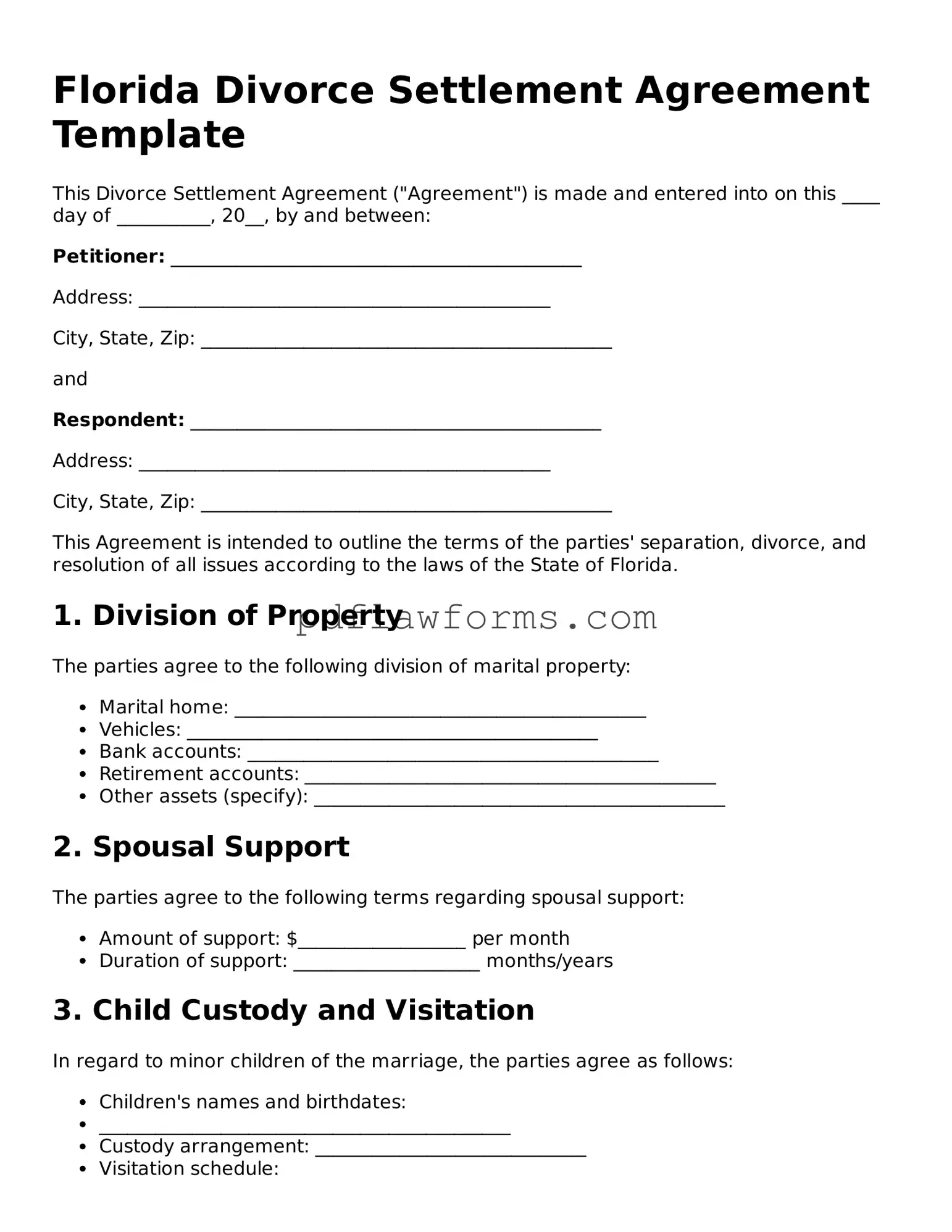Divorce Settlement Agreement Form for the State of Florida
The Florida Divorce Settlement Agreement form is a legal document that outlines the terms of a divorce, including asset division, child custody, and support obligations. This agreement serves as a mutual understanding between both parties, ensuring that each individual's rights and responsibilities are clearly defined. To get started on your divorce process, fill out the form by clicking the button below.
Make My Document Online
